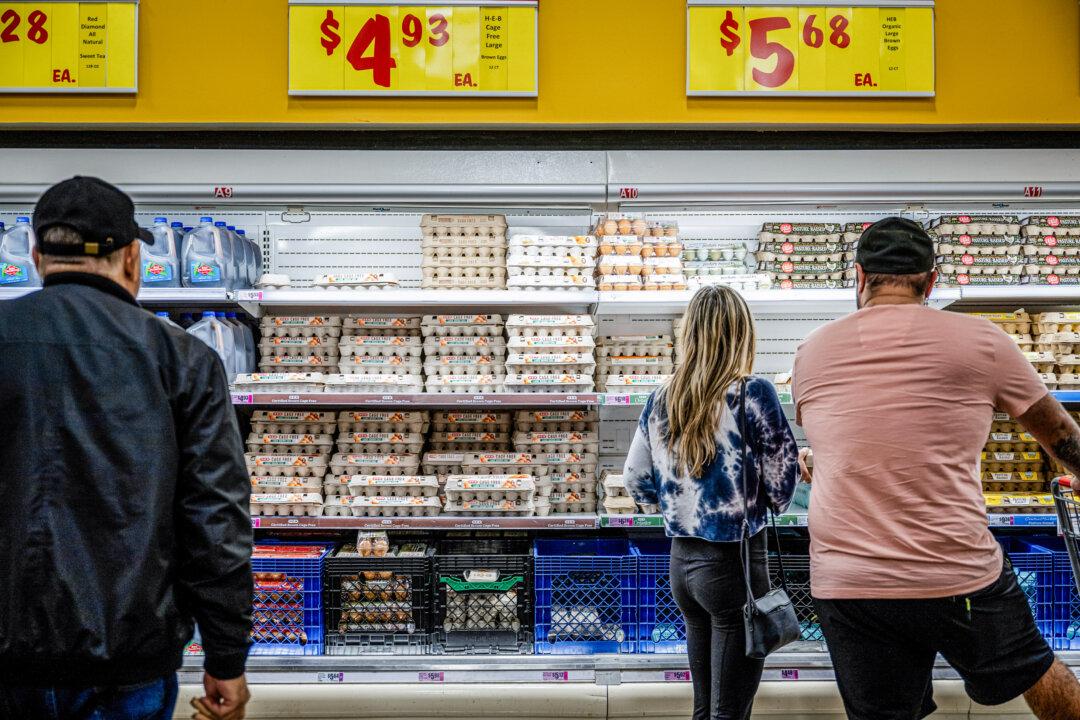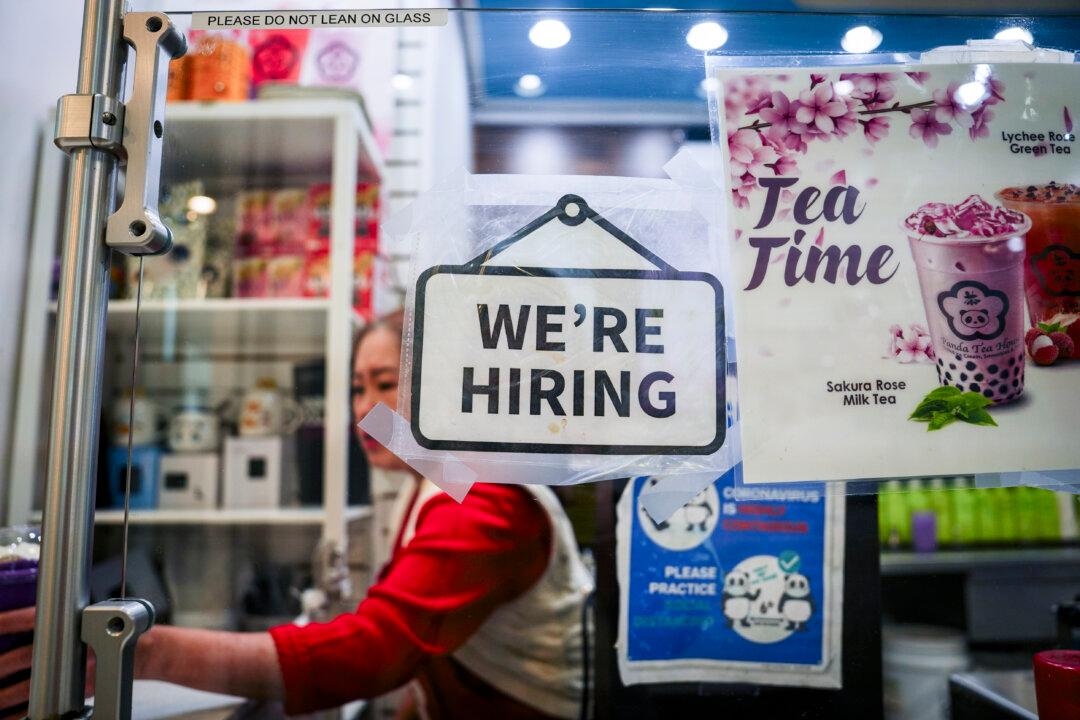The ongoing avian flu outbreak and higher production costs will force consumers to pay more for eggs this year, the U.S. Department of Agriculture (USDA) said.
The USDA predicts that farm-level egg prices could rise by more than 45 percent this year, “with a prediction interval of negative 30.9 percent and 228.8 percent.”
In December 2024, a dozen large, grade-A eggs cost an average of $4.16, the highest since February 2023.
Retail egg prices have endured tremendous month-to-month volatility, climbing by 3.2 percent in December 2024 and by 8.2 percent in November 2024. From December 2023 to December 2024, egg prices surged by nearly 37 percent.
The eggflation that U.S. consumers have experienced over the past few years stems from the highly pathogenic avian influenza (HPAI) outbreak in early 2022. The HPAI is a severe case of avian influenza that leads to elevated bird mortality rates.
The bird flu outbreak has caused the farming industry to slaughter more than 100 million birds, most of which are egg-laying chickens. When the virus is detected, every bird in the flock or farm will be killed to stop the disease’s spread.
Additionally, cage-free eggs have been the most affected. The data show that one-third of U.S. egg layers are cage-free hens, but they contributed about 60 percent of all bird flu cases last year.
California, one of several states mandating that all eggs sold be cage-free, has been the hardest hit. Millions of egg-laying hens have been lost since August 2024.
In addition to the virus, farmers have been facing high feed, fuel, and labor prices.
“The short production cycle of eggs amplifies their responsiveness to economic shocks, as disruptions such as feed price hikes or disease outbreaks quickly translate into market prices.”
Price pressures have eased over the past 12 months but have rocketed in recent years.
Real (inflation-adjusted) U.S. farm production expenses totaled $454 billion in 2024. While this is down from $473 billion in 2023, these input costs are up from $418 billion before the COVID-19 pandemic.

Last year’s labor costs are expected to have exceeded $51 billion, up by 6 percent from 2023.
Rising Prices Elsewhere
Egg prices have not been the only ones rising. Scores of food items have also been increasing in price recently.Live cattle prices reached an all-time high during the Jan. 27 trading session, reaching as much as $2.08 per pound. They have surged by more than 7 percent since the start of the year.
Coffee prices saw a 10 percent rise this month and an 85 percent increase over the past 12 months.
This has been fueled by weather-related supply disruptions in Brazil and Vietnam and strengthening global demand.
Orange juice prices have taken a breather this month but climbed by more than 40 percent in 2024.
Orange juice’s popularity rose during the COVID-19 pandemic when households returned to the breakfast table and began consuming the classic beverage for its vitamin C content.
However, production has been lackluster, particularly in Florida, which produced the fewest oranges since 1930.
For years, the Sunshine State has been fighting a deadly citrus disease called greening, which has destroyed orange production.
Farmers have also tried recovering from various natural disasters, including Hurricane Milton.
In January, soybean and corn prices have jumped by 3 percent and by 5 percent, respectively.
While soybean prices have suffered from a global supply glut, output in South America has recently come under pressure. However, prices are projected to hover at about $10 a bushel this year.
Conversely, Warren Patterson, head of commodities strategy at ING, predicts that the worldwide corn market may tighten in the year ahead.
“Global ending stocks this season are estimated to fall by a little more than 10 metric tons year-on-year to 304 metric tons, which would be the lowest ending stocks since the 2020/21 season.”
All eyes will be on the 2025 spring planting prospects, he noted.
Butter prices have risen by more than 1 percent this month. Robust demand, tightening global milk inventories, and falling output in the United States and New Zealand have contributed to the increase.
Politics of Food Inflation
Democrat lawmakers lambasted President Donald Trump for failing to lower food prices “immediately” after taking office.“We urge you to make good on your campaign promise to lower food prices for American families.”
Food inflation was a crucial issue during the election. Trump and others attributed higher food prices to former President Joe Biden’s economic policies.
Between January 2021 and December 2024, U.S. food prices surged by 24 percent.
“I’d like to bring them down. It’s hard to bring things down once they’re up. You know, it’s very hard,” the president told Time magazine.
“But I think that they will. I think that energy is going to bring them down. I think a better supply chain is going to bring them down.”
“Prices are gonna come down, but it’s going to take a little bit of time,” Vance said.







